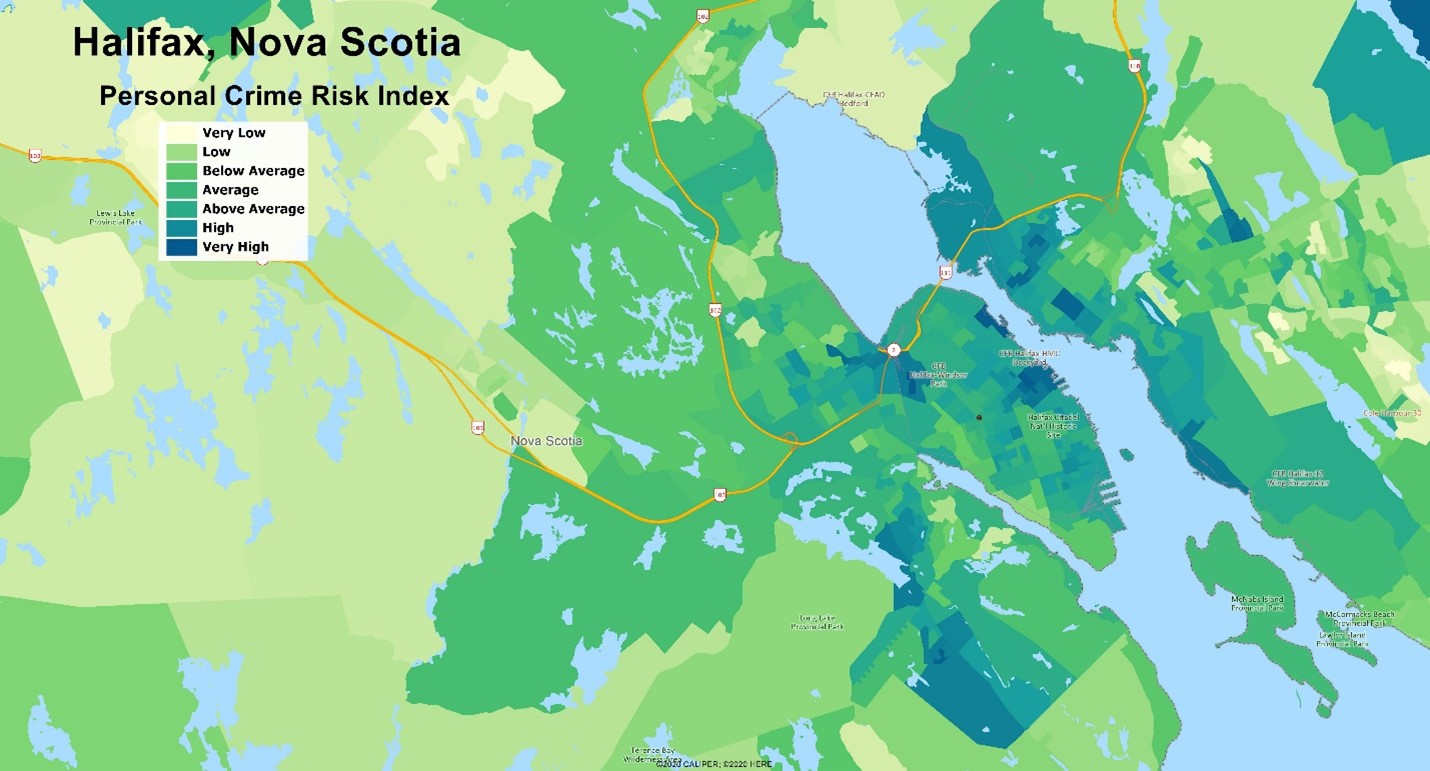The highly requested CrimeRisk Canada database is finally here. Much like CrimeRisk that covers the United States, CrimeRisk Canada assigns an index score on various crime types at all geographic levels across Canada. Let’s break down the similarities and differences between the databases.
When most people think about crime rates for Canada, they usually assume that they are generally lower in Canada. While that is mostly true, there are areas where the crime rates are similar or higher than in the United States. Property crime rates in urban areas can be higher than in most similar size U.S. cities, while murder rates are substantially lower.
The CrimeRisk Canada database consists of the same variables as in the United States, which make up seven core indices: murder, sexual assault, robbery, assault, burglary, larceny, and motor vehicle theft. A key difference is that in the United States, the rape index includes a narrow list of specific crimes, whereas in Canada a broader “sexual assault” measure is used. Also included are the overall personal crime risk index, property crime risk index, and overall crime risk. These indices are all normalized to have population weighted national indexes = 100. Below are two maps, one for Halifax, NS and one for Windsor, ON, both showing personal crime index scores.


Use cases for CrimeRisk Canada will be similar to those in the United States. Commercial real estate has long been a fan of CrimeRisk, key for either avoiding areas with high crime and vulnerable businesses like convenience stores, or as the basis for an overall security assessment which allows a range of security solutions based on size. Insurance underwriting or portfolio management can also find significant uses for CrimeRisk, especially for commercial properties.
Health Care is another industry which uses CrimeRisk for studies which relate health care outcomes to demographic and socio-economic characteristics of the area. Health Care locations identify areas where risk is more prevalent to adequately staff premises with security and medical personnel (and specifically trauma or emergency triage personnel) in areas where violent crimes are most prevalent.
